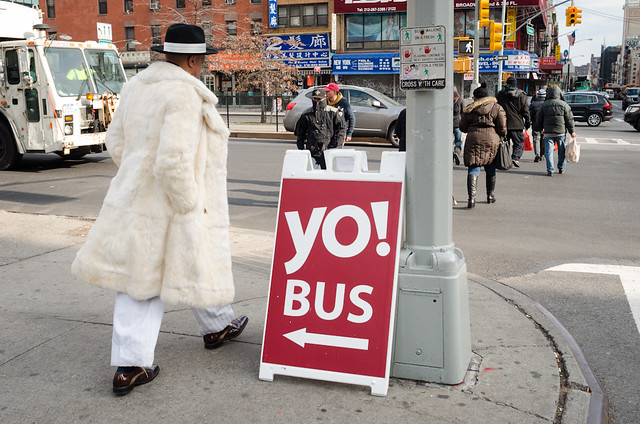Unlock the Magic in Your Story Now
Get the Free 20 questions to Ask Before Launching Your Idea workbook when you sign up for occasional updates.
Get the Free 20 questions to Ask Before Launching Your Idea workbook when you sign up for occasional updates.
Persuade On Purpose, With Purpose
filed in Marketing, Story Skills, Strategy

When you were three years old, you knew exactly what to say, and how to say it, to get what you wanted. But somewhere along the line, you became reluctant to use these skills. We all did.
Stories of con men and unscrupulous marketers, manipulating people into doing things that were not in their best interests coloured our judgement about what it meant to be persuasive. Our culture taught us that persuasion was a trick used by people with dishonourable intentions.
But manipulation isn’t a necessary by-product of persuasion. Being persuasive can be a valuable skill used to impact the people we serve. Like any tool or skill, its effect depends on how it’s used. Our intentions matter. An axe can either build something or destroy it, and persuasion can be as much a force for good, as for bad.
If we’re in the business of making things that change people’s lives for the better, we must master the art of persuasion to help people make decisions they’re glad about.
Instead of wondering how we can convince people to buy our product or support our idea, we could ask ourselves what’s at stake for them if they don’t. Then we can be more persuasive on purpose, with purpose and our heads held high.
Image by Annie Sprat
Share this article
Values, Choices And Strategy
filed in Strategy

When they opened their cafe, Shannon and Mo couldn’t afford $400 dining chairs, and besides, they wanted the food to do the talking. So, they bought second-hand chairs, then stayed up until midnight colouring in all the scratches on them with permanent markers. They served the food on IKEA boards with the logo scrubbed off, because they decided from day one to invest more in ingredients—the thing that was most important to them.
What we prioritise is an indication of what we care about, and conversely what we care about should be what we prioritise. Our values can be the foundation of a winning strategy because what we believe determines what we do.
Values are the beginnings of the signals we send and the stories we tell to the world. What we choose to do or not to do is a sign of what matters to us and in turn, helps people to decide if they want to align with our brands or ideas.
Sharing your values, and better, demonstrating them to your customers is a smart strategy. How are you doing that in your business?
Image by Roman Kraft
Share this article
The Myth Of Significance
filed in Story Skills, Success

Lately, we have come to believe in the myth of significance. Put our faith in being chosen, becoming ‘the one’. Striving to be bigger, noticed or more than, while simultaneously recounting a narrative of never enough.
In our minds, significance boasts a title, resides in a corner office, speaks from the centre stage, gaining recognition far and wide.
Significance, though, hides in plain sight. Carrying out seemingly small, unimportant acts, with intention and conviction. Without permission, to rewrite the future
Image by Anders Hellberg, Courtesy of TEIA
Share this article
The Value Conversation

Value is our subjective judgement about the utility, worth or desirability of goods, services or experiences.
It’s the story we each believe about the significance of something.
The value conversation is how we prioritise the allocation of finite resources.
The story we tell ourselves about the cost of gains over losses.
What’s the value conversation your customer is having?
Image by Mark Zamora
Share this article
Do The Unnecessary
filed in Strategy

The proficient doctor does the necessary. She greets the patient without shaking his hand. Examines him from head to toe without looking him in the eye. She’s alert to the slightest abnormal physical sign but doesn’t notice her patient shivering because the room is cold.
She taps information into the system and prints consent forms for the patient to sign. But she doesn’t acknowledge the fear in his eyes. She’s competent, efficient and some would say, good at her job. But if the patient comes away feeling like a collection of signs and symptoms instead of a human being, is she good enough?
A great deal of our work is about doing the necessary, meeting spec and making sure the client got what they paid for. But much of the skill and all of the joy in our work comes from doing the unnecessary—the things we’re not required to do. The acts that make our work meaningful to those we serve and to ourselves.
Image by Eugene Chystiakov
Share this article
Say It With Intention

Communication is not simply an exchange of information.
We’re never just speaking or writing to be heard.
We’re always trying to make ourselves understood.
Before you make the call, deliver your speech or write that email, think about what you want the recipient to know and how you want her to feel.
Then speak or type with that intention.
Because how the recipient feels, not only what she thinks, determines what she does next.
Image by Michael Brace
Share this article
Reverse Marketing

It seems like the most logical thing in the world to build your marketing strategy around the kind of customer you want to attract.
It stands to reason that you can tell a more resonant story when you know who you’re talking to. But when you’re faced with a market of everyone, it can be difficult to pinpoint your ideal customer. An easier place to start is by considering who you’re not for. Who is the antithesis of your ideal customer?
Who wouldn’t dream of buying your product or service, and why?
What’s the message you’d share to convince that person never to buy from you?
When you can tell that story well, you’ll be something to someone.
*Need help getting clear on your ideal customer so your marketing messages resonate?
The Story Strategy Course is for you.
Image by Todd Gross
Share this article
Rethinking Customer Loyalty

We’re very good at measuring customer loyalty.
We can track how much a customer spends and how often. We know how long they have been with us and have a plan for retaining them. We create premium memberships, gold cards, reward programs and ego boosting voicemails.
And yet, we often overlook one important fact.
Loyalty is reciprocal. It’s a two-way street.
Even in the age of customer empowerment, an unprofessional dentist will overtreat a patient to boost revenue. An insurer will cancel the cover of a client who’s paid tens of thousands in premiums if a single payment is missed. A bank will close a local branch used by elderly customers, who don’t bank online, to cut costs.
If we’re eager to measure how loyal customers are to us, why aren’t we so keen to measure how loyal we are to them?
Maybe it’s time for a rethink?
What if instead of only measuring, rewarding and expecting loyalty, we started measuring how we demonstrate it?
Image by Todd Gross
Share this article
More Vs. Enough

We’re surprised when a business that seemed to be thriving closes its doors.
The juice bar that succeeded in one location but scaled too quickly.
The online education platform with a big production budget but not enough students.
The great cause that couldn’t attract the support required to create an impact.
Our culture has taught us that we should multiply our effort to maximise our reward. But a sustainable business—one that is viable because it delights customer and creator, alike, doesn’t always depend on exponential growth.
Success isn’t only about doing all we could do.
Often, it’s about doing the best we can do, and being able to do it again tomorrow.
For many of us, that is more than enough.
Image by Amir Appel.
